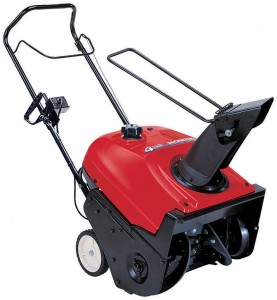 Troubleshoot a Clogged Snowblower
Troubleshoot a Clogged Snowblower
It seems almost inevitable: you’re cleaning up the snow that’s landed on your driveway, and then you notice that nothing is actually coming out of the chute. Why do snowblowers clog, and what can you do to keep it from happening?
Removing Clogs Safely
Before removing a clog, shut off the snowblower and disconnect the spark plug to ensure there is no possibility of an accidental start. Trying to remove clogged snow with your hands is a good way to be injured, even if the impellers aren’t moving. Instead, use the tool included with your snowblower for this purpose.
Addressing Wear and Tear
A snowblower works by using one or more augers to scoop up snow and push it through the chute. This movement depends on tight clearances between the augers, housing, and chute. If the augers are worn, bent or out of position, the added space can let snow built up, clogging the mechanism. Likewise, worn scraper blades can also increase the space snow has to gather as well as reducing the amount of snow the blower is picking up.
On single stage snowblowers, this problem is compounded because a single auger has to both pick up snow and force it through the chute. This type of blower usually uses rubber paddles instead of a metal auger, and these paddles can wear down over time. Let this wear go past the wear mark, and the snow will build up in the space between the auger and the housing, blocking the chute.
Make Sure Your Snowblower is Only Handling Snow
Rocks, toys, chains, and other debris can get wedged in the auger, causing a jam, or even make their way into the chute where they can settle and block the exiting snow. Before your next snowfall, inspect any surface you plan on clearing and remove these obstacles. Adding a pair of markers to your sidewalk and driveway can also help you keep on the pavement so you don’t pick up debris off of your lawn.
Cut Down on Friction
With use, the surfaces inside your snowblower can become rough, keeping the snow from sliding out freely. Check your owner’s manual for tips on keeping things moving. Depending on the material, different parts will require an application of oil, silicone spray, or car wax to keep things moving.
A Warm Engine is a Powerful Engine
Modern snowblower engines have an automatic choke to keep the motor running as it warms up. This choke restricts air flow, reducing power and increasing the chance of a clog. Instead of fighting with it, give the engine some time to warm up before using it.
Control the Load
Even with a warm engine and properly cared-for components, there are limits to what your snowblower can handle. Manufacturers may state a maximum height, but in real world conditions, you’ll get far better performance if you move smaller amounts of snow. Working with half the maximum snow height will greatly reduce the chance of snow getting jammed in the chute, cutting the time it takes to clear the pavement even if you have to move the snow twice during the same storm.
If you’re still having trouble, alter your path so that you aren’t scooping up snow across the whole width of the auger, and try moving slower to give the snowblower more time to push snow out of the chute.
Wet Snow and Ice
Wet snow is heavy, which can cause problems on its own, but when temperatures dip at night, the water inside freezes into ice. While you can take it slow when moving the snow, there’s not much you can do about the ice chunks aside from removing them when they get stuck.
Sourcing Parts for your Honda Snowblower
When you need shear pins, belts, paddles, or anything else for your Honda, visit www.hondalawnparts.com. We’re a certified Honda small engine equipment dealer, and we can ship anything you need across the U.S. and Canada. Ordering is easy, too — our site has built-in factory parts diagrams so you can find exactly what you need.
